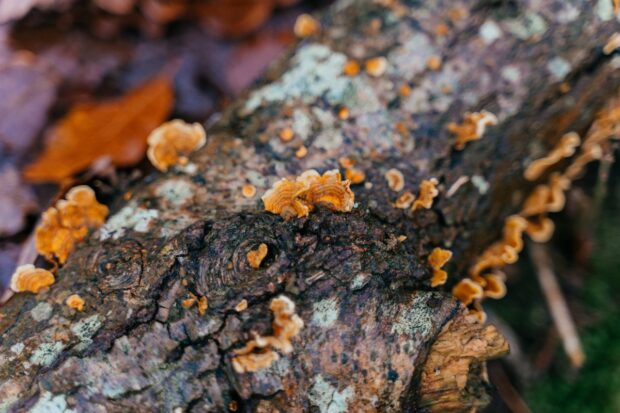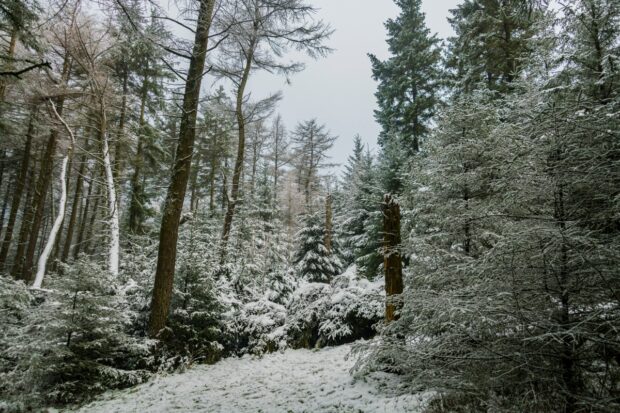 MacBradan Bones is a Woodland Officer for the Forestry Commission based in the East and East Midlands Area. Here he shares his tips for managing your woodland in winter.
MacBradan Bones is a Woodland Officer for the Forestry Commission based in the East and East Midlands Area. Here he shares his tips for managing your woodland in winter.
Winter is here and with it comes the tree planting season. It’s acknowledged as the best time to plant trees as it allows time for the roots to establish as they will keep growing through the milder winter days. Even though the top of the tree is dormant in winter, root growth is crucial for the trees’ survival if we suffer a spring drought.
If you’re a woodland owner, it can also be the perfect time to get outside and check how your woodland has fared over the growing season. Here’s our tips for the best management practices to carry out in winter.
It can be hard to know where to start during these cold months, so we’ve put together our top 5 tips for managing your woodland this Winter.

1. Check on areas of new planting
If you have any areas of new planting, now is the time to ‘beat up’ any trees which haven’t survived the summer. Taking the time to count your trees and replant any which have died can be done through the winter months ready for the next growing season. Newly planted trees are particularly vulnerable for the first 3 years or so as their roots are not yet well enough established to find water during droughts or prolonged dry spells. You can also take this opportunity to check if there is any one species not thriving on the site and look to replace them with a different better-adapted tree.
Now is also a good time for your trees’ annual check-up. The lack of leaves and reduction in ground vegetation can reveals the presence of squirrel nests and of bark damage, particularly at the junction of big branches and the main stem, and it can also make it easier to spot where deer may be coming and going.
2. Read up on tree pests and diseases
In mature woodland many fungi species will be fruiting. During the cold season, in deciduous woodland after leaf-fall, the brackets and toadstools of various fungi are easier to spot on the stems, crown and around the bases and roots of trees. Many are harmless or even beneficial, but many others can kill trees and even whole stands if not dealt with. Getting to know the ones that are harmful with a bit of reading up on tree pests and diseases, can be a good way to spend a wet day indoors.

3. Take note of repairs needed to paths and fences
After a summer’s compaction along paths and rides, winter rains can reveal where they need attention as the water will not drain away in these places. If the ground is soft then damage can occur if you work on it now so make a note of what’s needed and plan for this later in the season while the ground is hard with frost, or during the following spring when access is easier on a drier soil.
The soft ground is beneficial if you have any fence posts or the like that need replacing. Now is an easy time to do it, however, avoid using heavy machinery or taking too many trips up and down rides whilst doing it, to keep damage to a minimum.
4. Start any tree work
Winter is a good season for felling, so if you have a felling licence any tree work can start. Felling trees without a licence, where one would have been required, is an offence so make sure you check if you need one prior to any work taking place. If you are a firewood producer and you have an area for seasoning and processing, firewood orders are likely to be coming in fast so, if you haven’t already sold out, firewood can be loaded up ready for sale and any wood for seasoning stacked in the dry. Do be aware of the new regulations to ensure firewood is sufficiently well-seasoned to reduce air pollution with the Ready to Burn scheme.
It's also cooler, making the hard physical work of felling and coppicing a little easier!
The lack of vegetation makes moving around the wood a lot easier and now birds have finished nesting there’s no risk of accidentally disturbing them. However, be aware that other animals may be using the wood to shelter or hibernate. Of particular importance in woodland are bats and common dormice (although all wildlife is protected under the Wildlife and Countryside Act 1981) so great care should be taken not to disturb them if they are present.

5. Practise good biosecurity
As a woodland owner you want to ensure your trees remain healthy throughout the year, but wet winter weather can increase the risk of tree diseases being spread as some diseases need water to disperse, and mud on boots and tyres can transfer diseases from place to place. Practise good biosecurity at all times and make sure your boots and equipment are cleaned before you start any work and before you leave the site. If you have visitors to your woodland, make sure they do the same. It’s a great idea to always have a simple biosecurity kit on hand.
Finally, and most importantly, make time to go out and enjoy the stark, quiet beauty of the woods in winter. The cold weather and long nights can make it hard to spend time outdoors but it’s important to remember all the health benefits getting out can bring. Woodlands are fantastic for our physical and mental health, and watching your woodland thrive in the coldest season can be incredibly rewarding.


